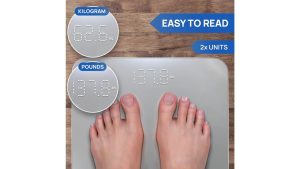Coffee is grown from seeds in nurseries and then transplanted to fields. It thrives in warm climates.
Coffee, one of the world’s most beloved beverages, has a fascinating journey from seed to cup. The process begins with cultivating coffee trees in tropical regions, where the ideal climate and soil conditions are essential for their growth.
From planting the seeds in nurseries to carefully nurturing the young coffee plants, each stage of the growth process requires precision and expertise. As the coffee cherries ripen, workers handpick and process them to extract the sought-after coffee beans. This meticulous process ultimately produces the aromatic coffee that millions worldwide savor daily.
The Journey Of Coffee: From Seed To Plant
The journey of coffee begins with planting seeds in nutrient-rich soil. Farmers nurture the plants through careful watering and monitoring. As the coffee cherries ripen, they are harvested by hand for processing.
The process of coffee cultivation starts with Choosing the Right Coffee Seeds.
Choosing The Right Coffee Seeds
Coffee growers carefully select seeds to ensure optimal growth and flavor.
Germination Process: The First Step In Coffee Growing
The Germination process marks the beginning of a coffee plant’s life. During this stage, the seed absorbs water and swells, causing the outer shell to break. The root, known as the radicle, emerges first, followed by the shoot. With the right conditions and care, the coffee plant starts its journey from seed to plant.
Optimal Conditions For Coffee Cultivation
Climate Requirements For Coffee Plants
Consistent temperatures between 60-70°F. Coffee cultivation is best suited in tropical regions with ample rainfall.
Soil Types And Their Impact On Coffee Growth
Soils rich in organic matter. The ideal soil pH for coffee cultivation is between 6.0 and 6.5. Coffee plants are sensitive to waterlogged soils that can lead to root rot.
Planting Techniques
Coffee is typically grown in tropical regions using specific planting techniques. Farmers plant coffee seeds in shaded nurseries to protect them from harsh sunlight. After the seedlings have grown, farmers transplant them to larger fields and carefully nurture them to ensure optimal growth.
Growing coffee requires a lot of care and attention, especially regarding planting techniques. The method of planting coffee plants can significantly impact their growth and yield. This section will discuss the methods of cultivating coffee, the spacing and layout of coffee plants, and other important considerations for growing healthy coffee plants.
Methods Of Planting Coffee
There are two main methods of planting coffee: seedlings and direct seeding. Seedlings are young coffee plants grown in a nursery and transplanted to the field. This method is more common and preferred by farmers because it ensures that the plants are healthy and uniform in size. Direct seeding, on the other hand, involves sowing coffee seeds directly into the field. This method is less expensive but carries a higher risk of poor germination rates and inconsistent plant growth.
Spacing And Layout Of Coffee Plants
The spacing and layout of coffee plants are crucial for their growth and productivity. Coffee plants need enough space to grow and develop a robust root system. The ideal spacing between coffee plants is between 6 and 8 feet, with rows spaced 8 to 10 feet apart. This spacing allows for adequate sunlight, air circulation, and easy access for maintenance and harvesting.
The layout of coffee plants can vary depending on the terrain and slope of the land. In flat areas, farmers typically plant coffee plants in straight rows, while in hilly or sloping terrain, they arrange them in a contour pattern to prevent soil erosion and promote water conservation.
Other Considerations
In addition to planting techniques, other vital considerations exist for growing healthy coffee plants. These include soil preparation, irrigation, fertilization, and pest and disease control. Farmers must choose the right soil type, prepare the soil by adding organic matter and nutrients, and ensure proper irrigation and drainage.
Farmers should regularly fertilize the soil with organic or chemical fertilizers, based on the specific nutrient needs of the soil. Pest and disease control should also be a priority to prevent crop losses and ensure the quality of the coffee beans. In conclusion, planting techniques are critical for growing healthy coffee plants and providing high yields. Farmers need to choose the proper planting method, spacing, and layout and consider other important considerations for successful coffee cultivation.
Nurturing Young Coffee Plants
Proper care and attention are essential when nurturing young coffee plants to ensure healthy growth and optimal yield. From irrigation needs to fertilization strategies, each aspect plays a crucial role in developing young coffee plants.
Irrigation Needs
Young coffee plants require consistent and moderate irrigation to establish robust root systems and support their growth. Overwatering can lead to root rot while underwatering can hinder their development. Balanced irrigation practices are vital to ensure the health and vitality of young coffee plants.
Fertilization Strategies
Implementing effective fertilization strategies is vital for nurturing young coffee plants. A well-balanced fertilizer regimen provides essential nutrients, such as nitrogen, phosphorus, and potassium, to support healthy growth and robust fruit production. The approach should be tailored to the specific nutritional needs of the soil and the development stage of the coffee plants.
Pest And Disease Management
Pest and disease management are crucial for ensuring healthy crop growth in coffee cultivation. Farmers employ various strategies, such as integrated pest management and regular monitoring, to prevent and control infestations. This proactive approach helps maintain the quality and yield of coffee beans.
Coffee farming is an intricate process that involves a lot of care and attention to detail. Pest and disease management is one of the most crucial aspects of coffee farming. Pests and diseases can cause severe damage to the coffee crop, resulting in significant economic losses for farmers. This section will discuss the common threats to coffee plants and eco-friendly pest control measures that farmers can use to protect their crops.
Common Threats To Coffee Plants
Coffee plants are vulnerable to many pests and diseases that can affect their quality and yield. The most common pests that attack coffee plants are coffee berry borers, intestine bugs, and leaf rust. Coffee berry borers are the most destructive pests and can cause significant damage to the coffee crop. Antestia bugs can cause uneven ripening of coffee cherries, resulting in poor-quality beans. Leaf rust is a fungal disease that can cause defoliation and reduce the yield of coffee plants.
Eco-friendly Pest Control Measures
Coffee farmers can use eco-friendly pest control measures to prevent the spread of pests and diseases. Here are some of the most effective eco-friendly pest control measures that farmers can use:
- Integrated Pest Management (IPM): IPM is an eco-friendly approach that uses biological, cultural, and chemical control measures to manage pests and diseases. This approach focuses on preventing pest and disease outbreaks rather than controlling them.
- Biological Control: Biological control involves using natural enemies to control pests and diseases. Farmers can use predatory insects, such as ladybirds and lacewings, to control coffee berry borers. They can also use fungi, such as Trichoderma, to control leaf rust.
- Cultural Control: Cultural control involves using farming practices to prevent pest and disease outbreaks. Farmers can use crop rotation, pruning, and proper irrigation to prevent the spread of pests and diseases.
- Chemical Control: Chemical control involves using pesticides and fungicides to control pests and diseases. However, farmers should use eco-friendly pesticides and fungicides to prevent environmental pollution and protect the health of farm workers.
In conclusion, pest and disease management is critical to coffee farming. Farmers can use eco-friendly pest control measures to prevent the spread of pests and diseases, protect the environment, and ensure the quality and yield of their coffee crops.
The Critical Growth Phases
The Critical Growth Phases of coffee plants play a crucial role in determining the quality and yield of the coffee beans. Understanding the different stages of growth can provide valuable insights into the intricate process of coffee cultivation.
Flowering Stage
During the flowering stage, coffee plants produce delicate, white blossoms with a sweet, jasmine-like fragrance. These fragrant flowers typically appear after three to four years of planting the coffee tree. The blooms last only a few days before giving way to small, green cherries.
Bean Development And Maturation
The bean development and maturation phase is a pivotal period in coffee’s growth. After pollination, the green cherries undergo a gradual transformation. Over several months, these cherries ripen, changing color from green to yellow to deep, rich red, indicating that they are ready for harvesting.
Harvesting Coffee Beans
When it’s time to harvest coffee beans, precision is critical. The process requires skill and knowledge to ensure top quality.
Timing And Techniques
Coffee beans are harvested when they are ripe to perfection. Handpicking is the most common technique used by skilled workers.
Post-harvest Processing
After harvesting, coffee cherries undergo pulping to remove the outer skin, revealing the beans inside.
Sustainability Practices In Coffee Farming
Conservation Of Biodiversity
Coffee farmers promote plant and animal diversity to maintain a healthy ecosystem.
Water And Waste Management Techniques
Efficient water usage and waste reduction methods are implemented on coffee farms.
Frequently Asked Questions
How Does Coffee Grow Step By Step?
Coffee grows in several stages, from planting seeds in a nursery to growing into tiny plants. After about a year, they are transplanted to fields. It takes several years for the coffee plants to mature and produce the cherries for making coffee.
Is Coffee Grown On A Tree Or Bush?
Coffee is grown on a bush, not a tree. The coffee plant belongs to the Coffea genus.
How Does Coffee Grow Naturally?
Coffee grows naturally as a fruit on trees in tropical regions. The trees produce coffee cherries, which contain coffee beans.
How Long Does A Coffee Tree Take To Grow?
A coffee tree takes 3-4 years to grow and produce coffee beans.
How Is Coffee Grown?
Coffee is grown from seeds in nurseries and then transplanted to fields for cultivation.
What Are The Ideal Coffee Growing Conditions?
Coffee plants thrive in tropical climates, at higher altitudes, with rich soil and ample rainfall.
How Long Does It Take For Coffee Plants To Bear Fruit?
Coffee plants typically take about 3-4 years to mature and start producing fruit.
What Are The Main Types Of Coffee Beans?
The main types of coffee beans are Arabica and Robusta, each with distinct flavors.
Why Is Shade Important In Coffee Cultivation?
Shade helps regulate temperature, retain soil moisture, and protect coffee plants from direct sunlight.
How Is Coffee Harvested?
Coffee cherries are selectively handpicked or strip-picked, depending on the harvesting method.
Conclusion
Understanding the coffee growing process gives us a deeper appreciation for our daily brew. Every step, from nurturing the seedlings to harvesting the ripe cherries, is a labor of love. Knowing the journey from farm to cup enriches our coffee experience as consumers.







